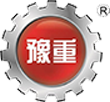Henan Zhonggong Group Helped CEEC Project Creating a Number of World Records
No. 6, Crane Industrial Park, Changyuan Town, Xinxiang City, Henan Province, China

Henan Zhonggong Group
Henan Tosta Machinery Co., Ltd.
Gantry Crane
Overhead Crane
Light Crane
Port & Container Crane
Launching Gantry Crane
Hoist & Crane Trolley
Crane Components
Electric Winch Overview
EOT Crane
Overhead crane needs to undergo some routine safety checks during operation to ensure safe operation. The inspection items and key points are as follows:
The lifting height limiter, stroke limit switch, and various interlocking mechanisms are normal, safe, and reliable.
The major components meet safety requirements: The condition for overhead crane spare parts to be considered suitable for use must meet certain standards and requirements. The opening increase is less than 15% of the original size, and the torsional deformation is less than 10%; the wear of the plate hook lining is less than 50% of the original size, and the wear of the plate hook core shaft is less than 5%, with no peeling, burrs, or welding repairs. The lifting hook bracket and pulley have no significant defects. The surface of the wire rope has steel wire wear and corrosion less than 40% of the diameter of the wire, with broken wires within one twisting distance less than 10% of the total number of wires, no obvious thinning, no core pulling out, dead corner torsion, compression deformation, annealing, or burning. The connectors and fixings of the wire rope end are intact with no looseness, two or more pressing plates, and no less than three ferrules. The drum has no cracks, and the connection and fixing are secure; the wall wear is less than 20% of the original thickness; the safe coiling is not less than two circles, and the drum-to-wire rope diameter ratio meets the requirements. The balance wheel is firmly fixed and the wire rope meets the requirements. The brake has no cracks, no looseness, no serious wear, the same size on both sides of the brake clearance, sufficient braking force, and the wear of the brake band is less than 50% of the original thickness.
The routine safety check of overhead crane plays a significant role in preventing personal accidents, reducing equipment accidents, improving equipment operation rate, and reducing maintenance costs.
The safety sliding contact line is a new type of mobile power supply device. It gradually replaces the old-style bare angle iron and copper sliding contact line with its superior insulation, safety, temperature resistance, earthquake resistance, and energy-saving performance. The safety sliding contact line is composed of a smooth and flat T2 copper bar or an aluminum profile with a wear-resistant conductor embedded in an engineering plastic tube or trough plate as the current-carrying body, which are combined into a power transmission conduit. There is an open groove under the conduit to facilitate the operation of the collector, and the high-wear copper-graphite brush of the collector directs the power to the working electrical appliance.
Overhead crane is prone to power failure during use, and sparks may occur in the power transmission conduit, with the sound of firecracker explosion when the sliding contact line is severely damaged, causing the collector of the overhead crane trolley to be replaced too frequently and affecting production. To solve this problem, the following improvements have been made:
Increase the chamfer of the collector brush and polish it smoothly.
Increase the spring strength and elasticity between the two opposite collector brushes to ensure that the spring can recover freely.
Reinforce the spring seat in the collector to ensure that the recovery spring of the brush is not easy to "string position" during operation.
The connection block at the connection point of the two sections of the safety sliding contact line should be chamfered to ensure smooth transition of the collector. At the same time, to ensure the normal use of the safety sliding contact line, it is essential for the crane operator to operate in accordance with regulations, and for maintenance personnel to perform regular maintenance and inspections.